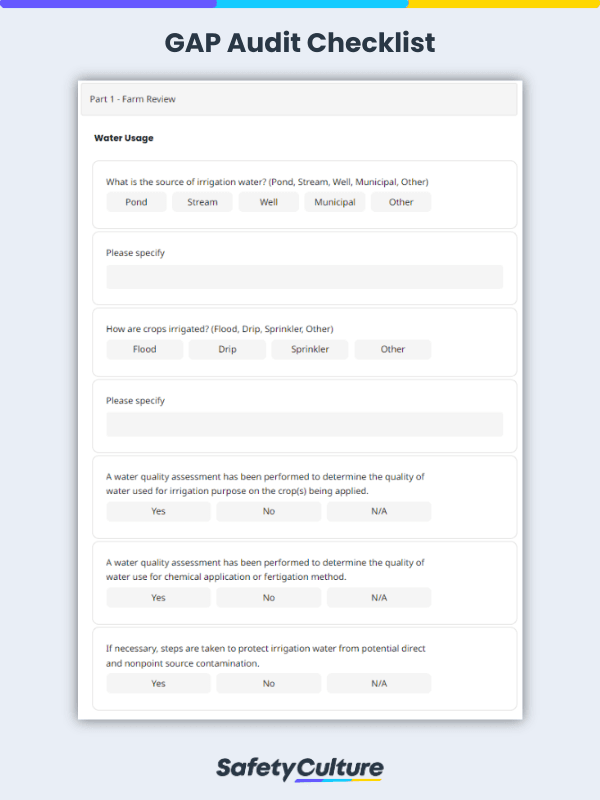What is a GAP Audit?
The USDA Good Agricultural Practices (GAP) & Good Handling Practices (GHP) audit verification program, also called GAP audit, is a voluntary certification program that determines if a food producer follows the USFDA’s recommendations on maintaining the safety and quality of fruits and vegetables. A GAP audit certification means that a food producer took proactive steps to maintain food safety and that they can engage in business with customers or suppliers that require GAP certification.
5 Steps to Prepare for a GAP Audit
- Read and understand the USFDA’s recommendations for agricultural produce: “Guide to Minimize Microbial Food Safety Hazards for Fresh Fruits and Vegetables.”
- Review the appropriate GAP audit for you based on your product and the customer’s requirements.
- Conduct internal audits to determine areas for improvement on food safety.
- Ensure competency needs are met based on the conducted internal checks.
- Request for a GAP & GHP audit.
Irrigation Audit as Part of The Audit
An irrigation audit is a qualitative assessment of an irrigation system’s overall condition. It aims to estimate potential dollar and water savings through conscious practices. This procedure also helps determine the overall distribution uniformity (DU) of water and creates the most efficient watering schedule for water conservation. An irrigation audit helps assess the overall performance of the irrigation systems. It helps identify risks, hazards, and opportunities to improve the system’s operation. An irrigation system audit can support agricultural and landscaping businesses to:
- conserve water through scheduled irrigation based on water requirements and availability;
- ensure public safety and reduce aquatic pollution;
- identify areas that need immediate attention to reduce costly repairs;
- minimize water waste; and
- ensure irrigation system’s reliability and effectiveness.
3 Main Parts of an Irrigation Audit
Irrigation audits that are in compliance with international guidelines are performed by professional contractors and Certified Landscape Irrigation Auditors (CLIA). CLIAs often perform two-stage irrigation audits: the first stage is more of a visual assessment of the irrigation water system, while the second stage focuses on scientific system tests to obtain data on plant water requirements and precipitation rates.
It consists of three major activities which all lead to the development of a cost-efficient irrigation schedule that is best for the clients. With the help of an irrigation audit checklist for maintenance, CLIAs go through these stages to gather valuable information and recommend site-specific solutions.
- Site inspection
Without scheduled maintenance, irrigation systems deteriorate over time. Clients would likely not notice this, which can lead to prolonged excessive water consumption and decreased plant performance. Site inspections help CLIAs have an initial assessment of landscape conditions and immediately identify areas that need fixing. After the site inspection, they perform tests to gain more scientific evidence. - Performance testing
The most common type of test for irrigation audits is the “catch can test”, which helps provide the most accurate value of precipitation rate within the landscape. Depending on the size of the property, catch can test are spread across different sprinkler systems in different zones to produce area-specific data. - Irrigation scheduling
Once the visual inspection and performance tests are done, CLIAs recommend a site-specific, science-based irrigation schedule. The process of professional irrigation audits helps avoid creating schedules based on mere generalizations and assumptions. Especially for landscape properties as large as sports fields, city parks, and golf courses, it is critical to optimize irrigation schedules according to the different precipitation rates in individual zones.


